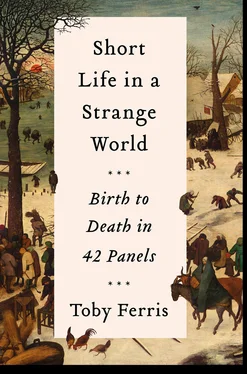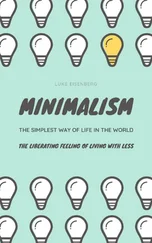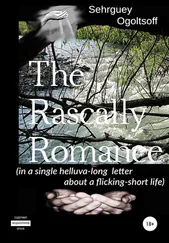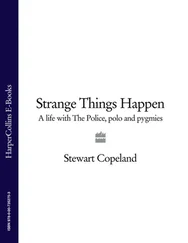*
Icarus’s wings would not have melted, we must conclude, but frozen. He would not have splashed spreadeagled as in the pseudo-Bruegel, his feathers fluttering down after him. He would have plunged, an icy meteorite, into the green sea.
Daedalus should have known. He was the great artificer, the great engineer. He could have reasoned it out, drawn some sort of empirical conclusion. There are high mountains in Crete, mountains capped with snow in late spring, early summer. It is cold up there, in the White Mountains.
Perhaps he was blinded by the desire to escape his Cretan prison. It was Daedalus who had constructed the wooden cow for Pasiphaë so that she could couple with the white bull of heaven; Daedalus who had devised the Cretan labyrinth, modelled on the maze that led to the underworld, to house her ungodly progeny. Here was a man who understood longing and how to channel it, be that longing bestial and unsightly, or youthful and yearning. Who is to say he did not also yearn, in his way?
In another version of the pseudo-Bruegel composition, also in Brussels, in the Van Buuren Museum, Daedalus is painted in the sky, looking back down at his tumbling boy. This may be a more precise copy of the lost original. Or, more likely, the mystified copyist has spelled out the logic which Bruegel deliberately elides. Bruegel wants the shepherd to be looking up at a great blankness, because it is out of just such an unknowable blankness – his father’s manic absence – that Icarus, solitary rebel angel, falls. There are no gods or men in the sky. They are all down here, slowly ploughing the heavy clay.
*
The Landscape with the Fall of Icarus came to light and was acquired by the Musées des Beaux-Arts in 1912, just nine years after the first powered flight. A painting for a modern age, an age of exhilaration.
The chief problem faced by the Wright Brothers at Kitty Hawk in 1903, once they had got their Flyer miraculously, stupidly, airborne, was learning how to operate it. No one had ever flown a powered aircraft before, there was no manual; the brothers had previously built and flown gliders, but gliders rely on thermals and updraughts, on a different ethos of flying. Now they were out on their own, piloting their precarious bird of struts and wires and great-spruce wood, in ignorance of the physics which was keeping them in the air. Four short flights (of, respectively, 120 feet, 175 feet, 200 feet and 852 feet) on 17th December concluded with a tumbling nose-down landing which irreparably damaged the contraption, and it never flew again.
The concept, however, had got irrevocably aloft. Pretty soon, to fly was to live. I grew up on stories of my father’s wartime experiences in open-topped biplanes – specifically, in the Fairey Swordfish, a plane so antiquated, so creaky, so simple, it was hard to bring down since the only critical parts were the engine and the pilot. You could shoot a Swordfish full of holes, as my father told me and as the Bismarck would discover to its cost, and it would keep on coming at you. Very slowly, but with a big torpedo.
No one shot my father’s Swordfish full of holes. He was eighteen when he volunteered for the Fleet Air Arm. His call-up papers in 1943 instructed him to bring a tennis racquet to his basic training. An astigmatic left eye kept him from piloting, but he flew as a gunner-navigator over the grey North Atlantic from his base in Scotland. Later his squadron was located in Canada, then Northern Ireland, and he finished the war in Ceylon, preparing for an invasion of Singapore which never happened. He saw no action at all. But he returned with a repertoire of stories – of snakes in his shower, of feuds with Canadian lumberjacks, of leave taken in New York City – garnered by a boy of eighteen, nineteen, twenty who had spent his early manhood sitting at the whirring, clattering, piston-thumping centre of a machine of Daedalic absurdity, hunting an invisible, perhaps wholly absent, enemy, exhilarated beyond measure. It would get no better than this.
On the day I first took to the air in a paraglider I was asked by a ten-year-old boy, nephew to Anna and Zabdi, to describe the exhilaration. And I told him that it had not been exhilarating, exactly, but an exercise in control: there had been adrenalin, for sure, but it had been released in a glut of hyper-attention. I had been, above all, attentive to details of harness and rigging, to the mechanics and materials keeping me aloft. He seemed disappointed, and I did not know how to communicate to him that I was in fact excited about this.
It was a version of excitement known to Daedalus, and not Icarus. Wilbur and Orville Wright would have understood. For them on that first day the exhilaration would have been as much in the play of canvas and wood, in the creak of the struts and the stench of petrol, as in any sensations of buoyancy and velocity. Bruegel, a miniaturist by instinct, his nose close to the oils on the canvas or panel, must have known something similar, painting his absurd ship. A good painting, like a real ship, is a Daedalic object: not a pretty thing of spirit and billows for the painter who labours in front of it, but a straining, groaning, improvable, precarious livelihood.
The ship on Bruegel’s canvas, by contrast, is all fluttering impetuosity, out of control, ignorant of physics. Alive.
I like to think of my spreadsheet as a modern-day Daedalic object, a thing of glue and feathers and grids and spars designed to harness the airy desires of my midlife, or a parachute gradually rippling and filling as I block out the paintings I have seen, breaking my fall.
Daedalus means cunningly wrought , but I am not sure how cunning my spreadsheet is. It is a reductive object. Bruegel is broken down into a simple alphabetical list, with each painting further broken down into a location, a date, a medium (oil on oak panel; tempera on canvas), a series of dimensions. I have calculated the area of each painting, and the proportion of each painting considered as a fragment of a vast singular object, which I call the Bruegel Object.
Roughly 1,082 cells of information, as it stands.
Where the information tapers off – beyond, in other words, my 1,082 cells of data – there is an effective infinity of empty cells stretching beside and below. To be precise, according to Microsoft’s published data on Excel, there are 1.71798691 × 10 10cells, or 17 billion, give or take.
The totality of my data clings to the edge of a great sea of unknowing which represents, I suppose, everything which is not on the spreadsheet: my ignorance of Bruegel; my ignorance of the museums in which his panels hang; my ignorance of the cities which those museums grace; and my ignorance of the impulses or affinities which have brought me to the brink of this project.
Why Bruegel? , why all of it? and why now? are questions the spreadsheet is not designed to address.
Over 17 billion cells of ignorance, then. But I have my little monastic garden of 1,082 cells, my tidy simulacrum of the cosmos.
Why this mania to quantify? Bruegel himself was not immune. In all art, there is hardly a better documenter of his own work. Almost every panel is signed and dated. Logic demands that somewhere he kept a ruled notebook in which he listed each painting that he completed, its subject, its medium and materials, its size, its destination, its cost and price and sale date, perhaps a note on problems overcome, solutions supplied.
The documentation of the Bruegel Object is secure. This is, in part, its attraction. We know what, we know where, we know when. Exclusions and reassignments, among the panels if not the drawings, are minimal, almost impossible, at least since the nineteenth century when Bruegel’s panels were routinely ascribed to Bosch.
Читать дальше












